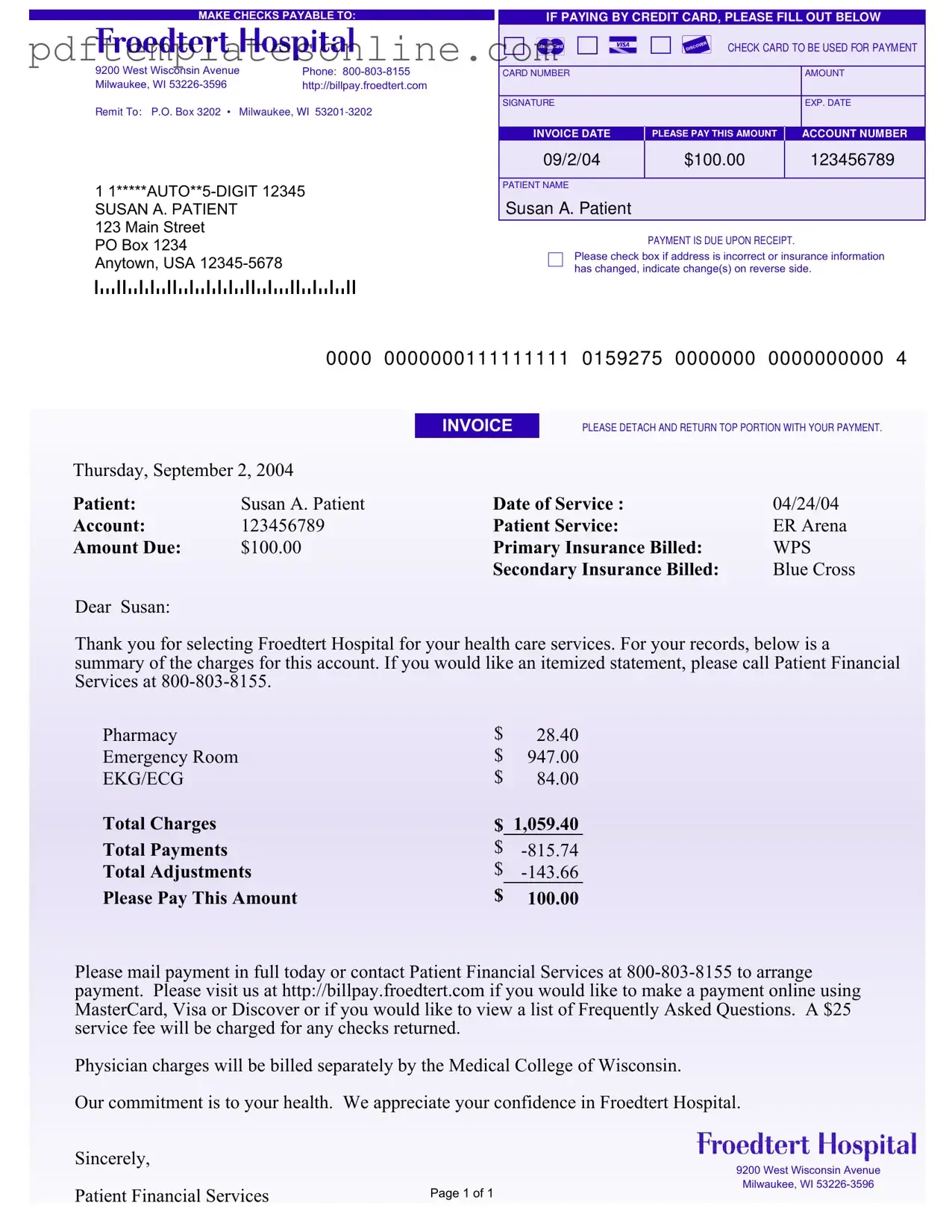When filling out the Hospital Bill form, individuals often make mistakes that can delay payment or create confusion. One common error is neglecting to provide accurate personal information. This includes the patient's name, address, and contact details. If any of this information is incorrect, it may lead to issues with billing and insurance claims.
Another frequent mistake is failing to check the insurance information thoroughly. Patients should ensure that the primary and secondary insurance details are complete and correct. Missing or incorrect policyholder IDs and group plan numbers can result in claims being denied or delayed, leaving patients responsible for the entire bill.
Additionally, many people overlook the payment method section. It is crucial to fill out the credit card information completely, including the card number, expiration date, and signature. Incomplete or inaccurate payment details can lead to payment processing issues, causing further delays in settling the bill.
Finally, individuals often forget to sign the form. A signature is necessary to authorize payment and confirm the information provided. Without a signature, the hospital may not process the payment, which can lead to additional fees or complications. Paying attention to these details can help ensure a smoother billing experience.
